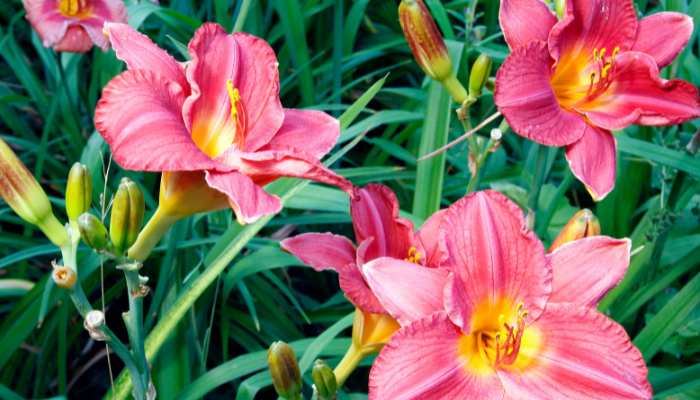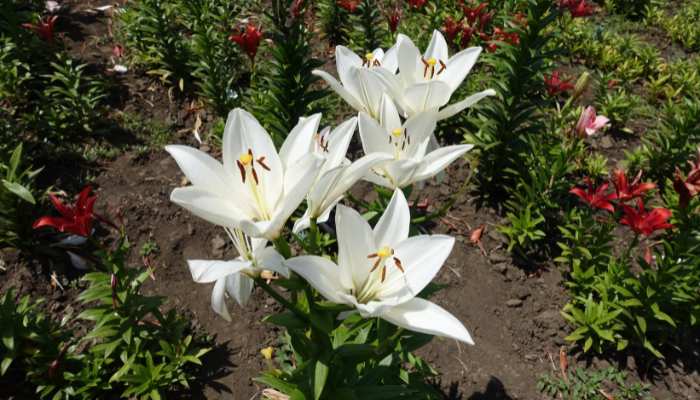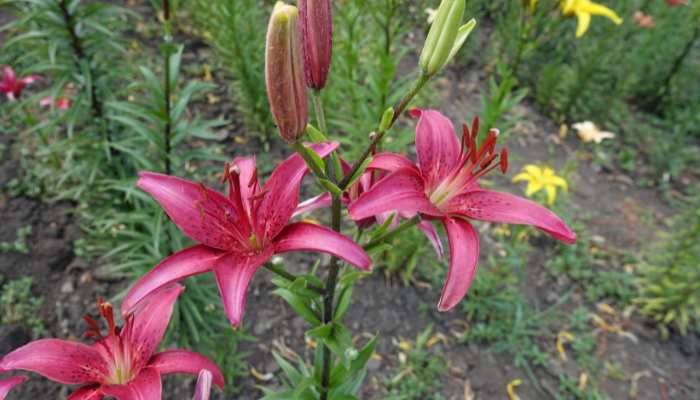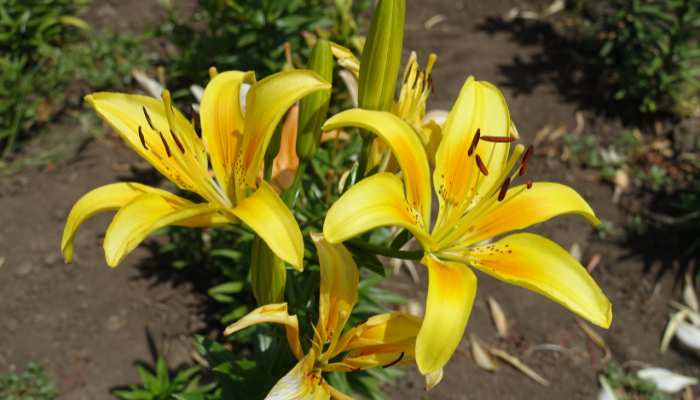Introduction
In the realm of botanical taxonomy, the distinction between various plant species can sometimes be as intricate as solving a riddle.
Among these enigmatic botanical puzzles lies the question: Are daylilies truly lilies? This article aims to delve into this botanical conundrum, shedding light on the classification, characteristics, and distinctions between daylilies and true lilies.
Table of Contents
Defining the Debate
Before unraveling the intricacies of daylilies and true lilies, it’s essential to establish a clear understanding of these botanical entities.
Daylilies, scientifically known as Hemerocallis, are perennial flowering plants renowned for their vibrant blooms and resilient nature.
True lilies, on the other hand, belong to the genus Lilium and encompass a diverse array of species characterized by their bulbous underground stems and striking flowers.
Relevance and Importance
The debate surrounding the classification of daylilies holds significance for botanists, horticulturists, and gardening enthusiasts alike.
Understanding the distinctions between daylilies and true lilies not only aids in proper plant identification but also influences cultivation practices, landscaping endeavors, and botanical research.

Types and Categories
Daylilies (Hemerocallis)
Common Varieties
- Stella de Oro: Renowned for its prolific blooming and golden-yellow flowers.
- Happy Returns: A reblooming cultivar with cheerful lemon-yellow blooms.
- Pardon Me: Noted for its compact size and deep red, ruffled flowers.
Hybrid Varieties
- Spider Hybrids: Characterized by long, slender petals resembling spider legs.
- Double Hybrids: Featuring densely layered petals for a fuller bloom.
True Lilies (Lilium)
Asiatic Lilies
- Orange Pixie: Exhibits vibrant orange blooms and compact growth habit.
- Matrix Series: Includes a range of colors from bold reds to soft pinks.
Oriental Lilies
- Stargazer: Famed for its large, fragrant, pink blooms with white edges.
- Casa Blanca: Renowned for its pristine white petals and intoxicating fragrance.
Symptoms and Signs
Daylilies
Common Symptoms
- Foliage Decline: Yellowing or browning of leaves due to overwatering or fungal infections.
- Bud Blast: Failure of flower buds to open, often caused by insufficient sunlight or nutrient deficiencies.
True Lilies
Signs of Trouble
- Yellowing Leaves: Indicative of waterlogged soil or nutrient imbalances.
- Stunted Growth: Resulting from pest infestations or viral diseases such as lily mosaic virus.

Causes and Risk Factors
Daylilies
Environmental Factors
- Sun Exposure: Thrive in full sun to partial shade conditions.
- Well-Drained Soil: Prefer moist, well-drained soil with good organic content.
True Lilies
Biological Factors
- Bulb Quality: Healthy bulbs are essential for robust growth and flowering.
- Pest Pressure: Susceptible to damage from aphids, lily beetles, and slugs.
Diagnosis and Tests
Daylilies
Visual Inspection
- Foliage Assessment: Check for signs of discoloration, wilting, or pest damage.
- Bloom Evaluation: Examine flower morphology and color consistency for abnormalities.
True Lilies
Soil Testing
- pH Levels: Assess soil pH to ensure it falls within the optimal range for lily cultivation.
- Nutrient Analysis: Test soil for nutrient deficiencies or excesses that may affect lily health.

Treatment Options
Daylilies
Cultural Practices
- Pruning: Remove spent flowers and dead foliage to encourage continued blooming.
- Dividing: Divide overcrowded clumps every few years to rejuvenate plant vigor.
True Lilies
Pest Management
- Biological Control: Introduce predatory insects like ladybugs to combat aphid infestations.
- Organic Sprays: Apply neem oil or insecticidal soap to deter common pests while minimizing environmental impact.
Preventive Measures
Daylilies
Gardening Practices
- Mulching: Apply a layer of organic mulch to conserve moisture and suppress weed growth.
- Proper Spacing: Plant daylilies at recommended intervals to prevent overcrowding and improve air circulation.
True Lilies
Hygiene Protocols
- Sanitation: Remove and destroy infected plant material to prevent the spread of diseases.
- Quarantine New Additions: Inspect and quarantine newly acquired bulbs to prevent introducing pests or pathogens.

Personal Stories or Case Studies
Daylily Enthusiast: Emily’s Journey
Emily, an avid gardener, shares her experience cultivating daylilies in her backyard oasis. Despite facing challenges such as deer browsing and unpredictable weather, Emily finds solace and joy in the daily ritual of tending to her beloved daylily collection.
Expert Insights
Horticulturalist Perspective: Dr. Patel’s Advice
According to Dr. Patel, a renowned horticulturist, distinguishing between daylilies and true lilies is crucial for optimal plant care. He emphasizes the importance of understanding their unique characteristics and cultivation requirements to ensure gardening success.
Conclusion
In conclusion, while daylilies and true lilies share certain botanical similarities, they belong to distinct genera with notable differences in morphology, growth habits, and cultural preferences. By unraveling the botanical riddle surrounding these beloved flowering plants, gardeners can deepen their appreciation for the diverse world of horticulture.

















1 thought on “Are Daylilies Really True Lilies?”